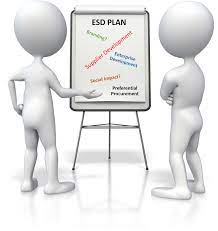Navigating Enterprise and Supplier Development (ESD): A Strategic Blueprint for Business Alignment
1. Understand ESD Requirements:
Begin by delving into the ESD landscape specific to your region or industry. Understand the legislative and regulatory frameworks, industry standards, and guidelines that govern ESD initiatives.
2. Develop an ESD Strategy:
Formulate a robust ESD strategy that aligns seamlessly with your business's overarching goals and values. Clearly outline specific objectives, target areas, and establish key performance indicators (KPIs) to measure the success of your initiatives.
3. Identify Target Areas for Development:
Conduct a thorough assessment of your enterprise and supply chain to pinpoint areas where development is most crucial. This could involve supporting local SMEs, enhancing supplier diversity, or providing skill development opportunities for your workforce.
4. Establish Partnerships:
Forge strategic partnerships, especially with SMEs owned by historically disadvantaged individuals or groups. Building strong relationships with these enterprises can lead to collaborative success and long-term sustainability.
5. Invest in Capacity Building:
Demonstrate your commitment to ESD by investing in training programs, mentorship, and resources to enhance the skills and capabilities of SMEs. This proactive approach fosters a competitive and sustainable ecosystem.
6. Promote Supplier Diversity:
Actively seek out and engage with suppliers from historically disadvantaged backgrounds. Supplier diversity not only contributes to a more inclusive supply chain but also aligns with the broader goals of ESD and societal equity.
7. Implement Inclusive Employment Practices:
Foster diversity within your workforce by implementing inclusive hiring practices. Provide opportunities for individuals from underrepresented groups and offer training to ensure a diverse and skilled workforce.
8. Align with Government Incentives:
Explore and take advantage of government incentives and support programs designed to encourage businesses to actively participate in ESD initiatives. This could include tax benefits, preferential procurement opportunities, or recognition for compliance.
9. Measure and Report Impact:
Establish clear KPIs to measure the impact of your ESD initiatives. Regularly assess and transparently report on progress in areas such as job creation, skills development, and supplier diversity.
10. Integrate ESD into Corporate Culture:
Ensure that ESD is not just a checkbox but an integral part of your company's core values and corporate culture. Foster a commitment to social responsibility and sustainability among employees at all levels.
11. Participate in Industry Networks:
Join industry networks or associations that focus on ESD. Participating in these networks provides valuable opportunities for collaboration, shared learning, and staying informed about best practices in ESD.
12. Regularly Review and Adapt Strategies:
ESD strategies should be dynamic and responsive. Regularly review and adapt your strategies based on the evolving needs of your business, industry, and the broader community.
By following this strategic blueprint, businesses can actively contribute to the goals of Enterprise and Supplier Development, creating a positive ripple effect that fosters economic growth, inclusivity, and sustainability within their ecosystems. ESD is not just a compliance measure; it's a pathway toward a more responsible and equitable business future.
Contact:
Kairos B-BBEE Verification Agency
033 8151365
admin@kairosbee.co.za



Comments
Post a Comment